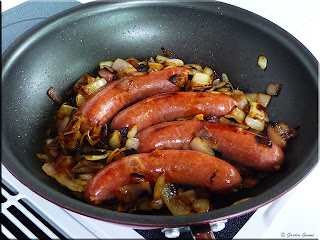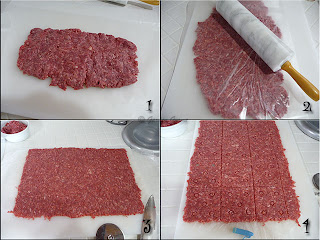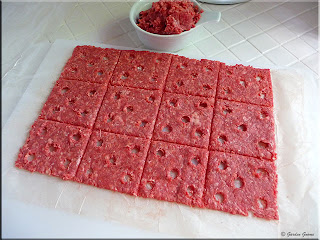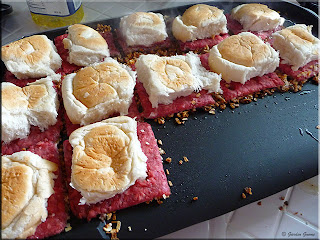
Food spoilage and contamination not only cost money but can lead to food borne illness. Much of this can be avoided by using effective ways to reduce harmful bacteria in the kitchen by developing good kitchen safety practices. When it comes to food safety an ounce of prevention is worth more than a pound of cure! This weeks Frugal Kitchens 101 focuses on food safety in the kitchen. Most of these tips are very low cost but they are in combination quite effective.
- wash your hands - Wash your hands before, during and after any food prep in hot, soapy water for at least 20 seconds. I keep a pump bottle of liquid soap by the sink for easy use while doing kitchen duties. Using a soap with antibacterial properties is not necessary and the use of these types of soaps have been shown to be detrimental.
- clean your cutting boards - Plastic cutting boards can be put in the dishwasher for effective, safe cleaning. Wood and bamboo cutting boards can be bleached to kill germs. Undiluted vinegar is an eco-friendly way to kill germs on cutting boards as well. I prefer using a 50% to 70% rubbing alcohol in a spray bottle that effectively sanitizes most surfaces. Of note bamboo cutting boards are not only eco-friendly but have antibacterial properties that help kill bacteria so if replacing a cutting board consider buying bamboo.
- sanitize your sink - Did you know the kitchen sink can have more bacteria per square inch than a garbage pail or even a toilet? It's true! Sinks should be washed after each use with hot soapy water to eliminate bacteria. I use a 50% to 70% rubbing alcohol in a spray bottle to bring the sink and tap to a sparkly shine while killing off any germs that escape washing.
- sponges vs dishcloths - Sponges are second to the sink for bacteria levels. While microwaving or boiling sponges are often recommended for sanitizing sponges I feel it is too easy to overlook sanitizing them often enough. I do not use sponges in the kitchen. Instead I have an amble supply of 100% cotton dishcloths both purchased and handmade that I use. I use a fresh dishcloth each time I do dishes.
- wash produce - All produce whether store bought or home grown including those with inedible rinds and peels should be washed before consuming. Spray with a 3:1 vinegar to water solution then rinse under tap water. This is as effective as the expensive commercial fruit and vegetable washes.
- don't rinse meats unless brined - Rinsing meat and poultry is more likely to spread any contaminants around the sink area. Brined meats should be rinsed before cooking. Clean the sink and surrounding area before and after rinsing brined meats.
- use mis en place bowls - Placing ingredients for a recipe into small glass bowls rather than using directly from the larger container helps prevent cross-contamination.
- use barriers - Kitchen items (eg. cutting board, scales) that come into contact with both raw and cooked foods should be lined with a protective barrier such as plastic wrap or tin foil. An eco-friendly alternative is to wash these items in hot soapy water.
- don't recycle used marinade - Used marinade is contaminated with raw meat juice so is not safe to consume as a sauce unless cooked. A small amount of unused marinade can be set aside to used as a sauce.
- defrost in the refrigerator or microwave - Meats and poultry should be defrosted in the refrigerator or microwave not on the counter at room temperature.
- reheat rapidly - Foods should being reheated should be brought through the danger zone (40ºF - 140ºF) as quick as possible. Sauces, soups and gravies should be brought to a boil while casseroles should reach an internal temperature of 165ºF or higher.
- use a refrigerator/freezer thermometer - The refrigerator compartment of your refrigerator should be set to 35ºF - 40ºF and the freezer set to 0ºF or lower. Higher settings risk food spoilage and possible food borne illness. Lower settings can result in some food spoilage in the refrigerator as well as waste electricity.
- use a food thermometer - Use an instant read thermometer to ensure cooked foods reach the proper temperature before consuming.




































